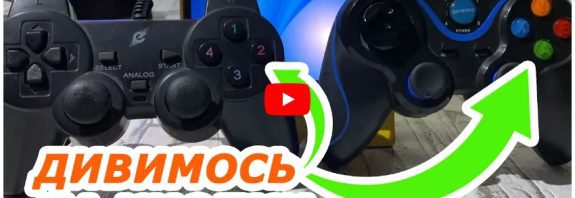When did the first gamepad appear?

When did the first gamepad appear?? The first gamepad appeared in 1982 for the Atari 2600 console. This gamepad had two analog sticks and 12 buttons, and was the first control device specifically designed for use with home game consoles. Since then, gamepads have become an integral part of the video game industry and continue to evolve and improve to this day.
Later, with the development of game consoles and computers, gamepads became the standard control device for a large number of games. In 1983, Nintendo released its first gamepad for the Famicom (or NES in the US), which had the shape of a cross-shaped arrangement of four buttons. This gamepad became the prototype for many subsequent control devices from Nintendo.
When did the first gamepad appear? In the 1990s, gamepads appeared with a joystick instead of a handle and several additional buttons, which expanded the control options in games. Later, wireless gamepads appeared, which allowed players to comfortably play at a distance from the TV. Over time, new features were added to gamepads, such as built-in speakers and vibration, which made the gameplay even more immersive and realistic.
Today, gamepads can be used for a variety of gaming platforms, including PlayStation, Xbox, Nintendo, and PC consoles. They have a large number of buttons, motion sensors and other functions that provide accurate and convenient control in games of various genres.
How many varieties of gamepads do we have today
Today, there are numerous varieties of gamepads, reflecting the diversity and complexity of modern gaming. Here are the main categories and some examples within each:
- Standard Console Gamepads. These are typically bundled with gaming consoles and have a standard layout with a directional pad (D-pad), thumbsticks, face buttons, and shoulder triggers.
- Examples:
- PlayStation DualSense (PS5)
- Xbox Wireless Controller (Xbox Series X/S)
- Nintendo Switch Pro Controller
- Examples:
- Pro or Elite Controllers. These are enhanced versions of standard gamepads, often featuring additional customization options, extra buttons, and higher build quality.
- Examples:
- Xbox Elite Wireless Controller Series 2
- Scuf Infinity4PS Pro (for PS4)
- Razer Wolverine Ultimate (for Xbox One and PC)
- Examples:
- Retro or Classic Controllers: These are designed to replicate the look and feel of controllers from older gaming systems, often used with retro gaming consoles or modern systems for a nostalgic experience.
- Examples:
- Nintendo Classic Mini Controller (NES and SNES)
- Sega Genesis Mini Controller
- 8BitDo SN30 Pro (multi-platform)
- Examples:
- Specialized Controllers. These are designed for specific types of games or gaming experiences, such as fighting games, flight simulators, or racing games.
- Examples:
- Hori Real Arcade Pro (fight stick)
- Thrustmaster T-Flight Hotas X (flight stick)
- Logitech G29 Driving Force (racing wheel)
- Examples:
- Mobile Game Controller. These are designed to work with smartphones and tablets, providing a more traditional gaming experience on mobile devices.
- Examples:
- Razer Kishi
- Backbone One
- GameSir X2
- Examples:
- Adaptive Controllers. These are designed to be accessible to gamers with disabilities, offering highly customizable inputs to accommodate various needs.
- Examples:
- Xbox Adaptive Controller
- Examples:
- PC and Multi-Platform Controllers. These controllers are designed to work with PCs as well as multiple consoles and devices, often with a focus on versatility and customization.
- Examples:
- Logitech F310
- 8BitDo Pro 2
- Steam Controller
- Examples:
Each category contains a variety of models from different manufacturers, catering to diverse gaming preferences and requirements.









